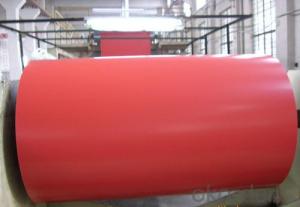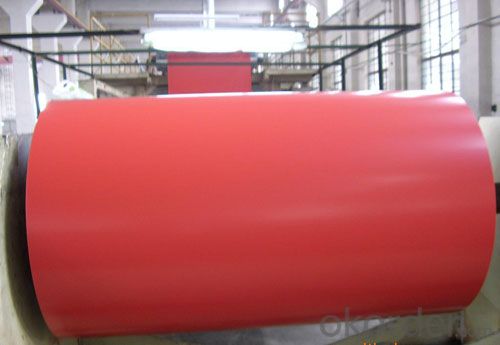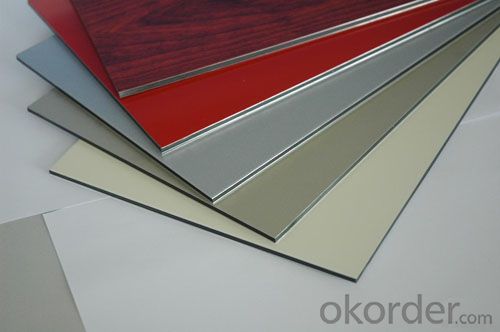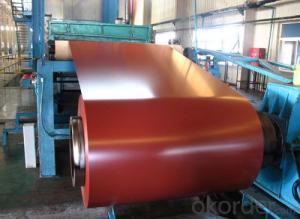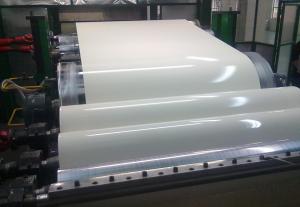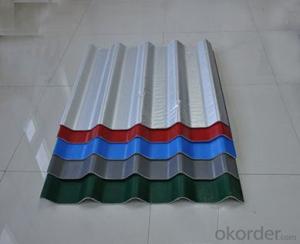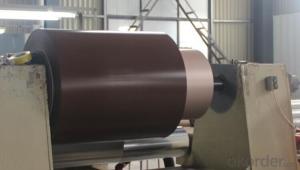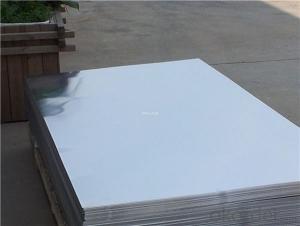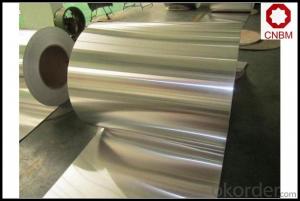Aluminum Skin Sheets Greenville Sc - Color Coated Aluminum Sheet Coil for Roofing and Cladding System
- Loading Port:
- China main port
- Payment Terms:
- TT OR LC
- Min Order Qty:
- 3 m.t.
- Supply Capability:
- 5000 m.t./month
OKorder Service Pledge
OKorder Financial Service
You Might Also Like
Specification
1.Specifications of Color Coated Aluminum Sheet Coil For Roofing And Cladding System
| Raw material | A1100/3003/3005/3105/8011 etc. |
| Certificate | ISO9001. ISO14001. SONCAP |
| Thickness | 0.02-3.0mm |
| Width | 1240mm |
| Color | As per RAL or your sample |
| Weight | 1.5-3MT/Coil |
2. Application of Color Coated Aluminum Sheet Coil For Roofing And Cladding System
Exterior applications: wall cladding, facades, roofs and canopies, tunnels, column covers or renovations
Interior applications: wall cladding, ceilings, bathrooms, kitchens and balconies
Advertisement and market applications: display platforms, signboards, fascia and shop fronts
3. Feature of Color Coated Aluminum Sheet Coil For Roofing And Cladding System
*Such coil is specially designed to replace aluminum ingot, due to the high export tax of aluminum ingot, the coil has better price than ingot.
*This type of coil can fit customer's remelting furnace just like ingot, no need to make any change to the production line that was previously used for ingot. The standard coil size and weight is very suitable for the feed gate of furnace.
*This type of coil causes less material wastage than ingot when remelted.
*Our coil is made directly from ore, no need to go though the ingot making process, quality is much better than other suppliers who use ingot scrap to make coil.
Be free from Oil Stain, Dent, Inclusion, Scratches, Stain, Oxide Dicoloration, Breaks, Corrosion, Roll Marks, Dirt Streaks and other defect which will interfere with use
4. Certificate:
SGS and ROHS(if client request, paid by client), MTC(plant provided), Certificate of Origin(FORM A, FORM E, CO), Bureau Veritas and SGS (if client request, paid by client), CIQS certificate
5. Image of Color Coated Aluminum Sheet Coil For Roofing And Cladding System
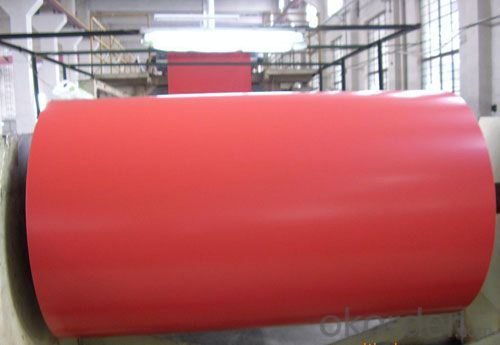
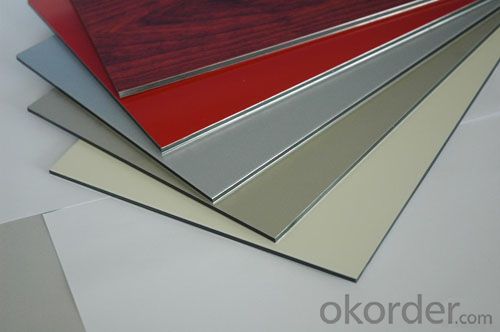
6. FAQ
1) What is your delivery time?
Our regular production time is over 30 days, It depends on the order quantity also.
2) What is your payment term?
We accept T/T, LC at sight, Usance LC 30, 60, 90, 120, 180 DAYS.
3) What is your price structure?
Our foil price is based on Shanghai Metal Price(SMM), not LME, but we could offer LME+ Conversion for your reference.
4) What is your Delivery term?
We do FOB, CFR, CIF, we don't do DDP.
5) Could you offer sample?
We could offer sample as your requirement. A4 Size sample is free for you, for bigger roll sample, it depends on the coil weight.
- Q: Can aluminum sheets be used for bus shelters?
- Yes, aluminum sheets can be used for bus shelters. Aluminum is a lightweight and durable material that is commonly used in construction projects, including bus shelters. It offers excellent resistance to corrosion, making it suitable for outdoor applications where it may be exposed to harsh weather conditions. Additionally, aluminum sheets can be easily formed and fabricated into various shapes and sizes, allowing for customized designs and easy installation. The use of aluminum sheets for bus shelters also provides a cost-effective solution as it requires minimal maintenance and has a long lifespan.
- Q: Is it possible to use aluminum sheets as a material for exterior wall cladding?
- <p>Yes, aluminum sheets are commonly used for exterior wall cladding due to their durability, low maintenance, and resistance to weather conditions. They are lightweight, easy to install, and can be recycled, making them an environmentally friendly option. Aluminum sheets can also be painted or coated in various colors and finishes, offering design flexibility. However, it's important to ensure proper installation and sealing to prevent water infiltration and to maintain the integrity of the cladding system.</p>
- Q: aluminum is used to make planes, cast iron is used to make heavy mashines. what is the comparisonof teh densities of aluminum and cast iron?
- The density of aluminum is MUCH lower than cast iron (thus, aluminum is LIGHTER). Because it is lighter, it would be much more ideal for applications like plane building, which is why aluminum is used over cast iron in airplanes. As well, aluminum has a protective coating called aluminum oxide which protects it from corroding in water. [Answer: see above]
- Q: The radius of an atom of aluminum is 143pm and there are 10^12 in a meter. The aluminum is a 3x3cm square. The density is 2.70 g/cm^3. I found the mass to be 0.03g. I found the volume to be 0.09cm^3
- Good quality standard aluminum foil such as Reynolds brand is 0.007 inches thick. If aluminum atoms are indeed 143 picometers in radius then the foil would be 2,486,713 atoms thick. Of course, the thickness is not controlled to a tolerance of one atom. (Cheaper brands are about 0.0060 to 0.0065 inches thick.) The ionic radius of aluminum is commonly accepted to be 72 pm, and as of 2008 a covalent radius of 121 pm. . .
- Q: Are aluminum sheets suitable for automotive body reinforcements?
- Yes, aluminum sheets are suitable for automotive body reinforcements. Aluminum is a lightweight material that offers high strength-to-weight ratio, making it an ideal choice for automotive applications. It provides excellent corrosion resistance, which is crucial for vehicles exposed to various weather conditions and road salts. Additionally, aluminum sheets can be easily formed and welded, allowing for seamless integration into the body structure. The use of aluminum sheets in automotive body reinforcements helps reduce the overall weight of the vehicle, leading to improved fuel efficiency and performance. Furthermore, aluminum is a recyclable material, aligning with the automotive industry's increasing focus on sustainability. Hence, aluminum sheets are indeed a suitable choice for automotive body reinforcements.
- Q: Can the aluminum sheets be used for manufacturing power distribution systems?
- Indeed, power distribution systems can make use of aluminum sheets for their manufacturing needs. The electrical industry widely embraces aluminum as a material of choice due to its exceptional conductivity, lightweight nature, and cost-effectiveness. Notably, busbars, the essential elements within power distribution systems, are commonly crafted using aluminum. This is made possible by the ease with which aluminum sheets can be fabricated and shaped to conform to the desired busbar configuration, thereby enabling efficient transmission and distribution of power. Furthermore, aluminum displays commendable resistance to corrosion, rendering it suitable for outdoor applications. However, it remains crucial to guarantee that the aluminum sheets adhere to the required electrical and mechanical specifications for power distribution systems to ensure both their safety and reliability during operation.
- Q: Can aluminum sheet be used for aerospace applications?
- Certainly, aluminum sheet finds application in the aerospace industry. Owing to its advantageous characteristics, including being lightweight, highly robust, and resistant to corrosion, aluminum is extensively employed in this sector. It is frequently utilized in the fabrication of aircraft fuselages, wings, and structural elements. Aluminum sheets are commonly employed in the production of aircraft panels, where their exceptional strength-to-weight ratio facilitates enhanced fuel efficiency and greater payload capacity. Furthermore, aluminum sheets offer versatility and suitability for a wide range of aerospace applications due to their ease of forming, machining, and welding.
- Q: I don't like purchasing deoderants that contain aluminum sulfate due to the fact that a build-up of aluminum may cause Alzheimer's (my grandfather has it). So, I purchased an all natural deoderant only to later look more closely at the labely and see POTASSIUM ALUM....hmmm, alum versus aluminum? Supposedly alum cannot be absorbed by the skin so it's safe....any proof?
- Alum refers to a specific chemical of the form ABx(SO4)y ? zH2O where A and B are metals of some type and sometime Aa(SO4)b?Bx(SO4)y?zH2O called mixed sulfate alums' ------------------------- Aluminum sulfate is: Al2(SO4)3 Potassium alum has the formula KAl(SO4)2 ? 12H2O so the two are quite different compounds. According to the MSDS this compound is non-hazardous ref: msds.chem.ox.ac.uk/AL/aluminium_p...
- Q: This question asks for a list of various standard sizes of aluminum sheets that are commonly available in the market.
- <p>Aluminum sheet sizes can vary widely depending on the application and industry standards. Commonly available sizes include 1/8 inch, 1/4 inch, 3/8 inch, and 1/2 inch thicknesses, with widths ranging from 12 inches to 60 inches. Lengths can be from 4 feet to 20 feet or more. However, specific sizes can differ based on regional standards and manufacturers' offerings. It's also important to note that custom sizes can be ordered to meet specific project requirements. Always check with suppliers for the most current and detailed list of available sizes.</p>
- Q: What are the advantages of using aluminum sheets?
- Aluminum sheets offer numerous benefits for various applications. To begin with, their lightweight nature makes them easy to transport and handle. This makes them particularly suitable for industries where weight plays a crucial role, such as aerospace and automotive sectors. Moreover, aluminum sheets possess exceptional corrosion resistance properties. They have a natural resistance to rust and can endure harsh environmental conditions, including moisture, chemicals, and UV rays. As a result, they are highly durable and long-lasting, reducing the need for frequent maintenance and replacements. Additionally, aluminum sheets are highly malleable and can be easily shaped into different forms and sizes. This flexibility allows for customization and versatility in design, enabling manufacturers to create intricate structures and products. Furthermore, aluminum sheets exhibit remarkable thermal and electrical conductivity. They effectively dissipate heat and conduct electricity, which makes them well-suited for applications in the electrical, heating, and cooling industries. Another advantage of utilizing aluminum sheets is their aesthetic appeal. Aluminum has a sleek and contemporary appearance, making it a popular choice for architectural and interior design projects. It can be effortlessly painted or coated to achieve various colors and finishes, further enhancing its visual allure. Lastly, aluminum is a sustainable material. It is fully recyclable and can be repeatedly melted and reformed without losing its properties. This makes aluminum sheets an environmentally friendly option, contributing to waste reduction and a lower carbon footprint. In conclusion, the advantages of employing aluminum sheets include their lightweight nature, corrosion resistance, malleability, thermal and electrical conductivity, aesthetic appeal, and sustainability. These qualities make aluminum sheets the preferred material for numerous industries and applications.
Send your message to us
Aluminum Skin Sheets Greenville Sc - Color Coated Aluminum Sheet Coil for Roofing and Cladding System
- Loading Port:
- China main port
- Payment Terms:
- TT OR LC
- Min Order Qty:
- 3 m.t.
- Supply Capability:
- 5000 m.t./month
OKorder Service Pledge
OKorder Financial Service
Similar products
Hot products
Hot Searches
Related keywords
